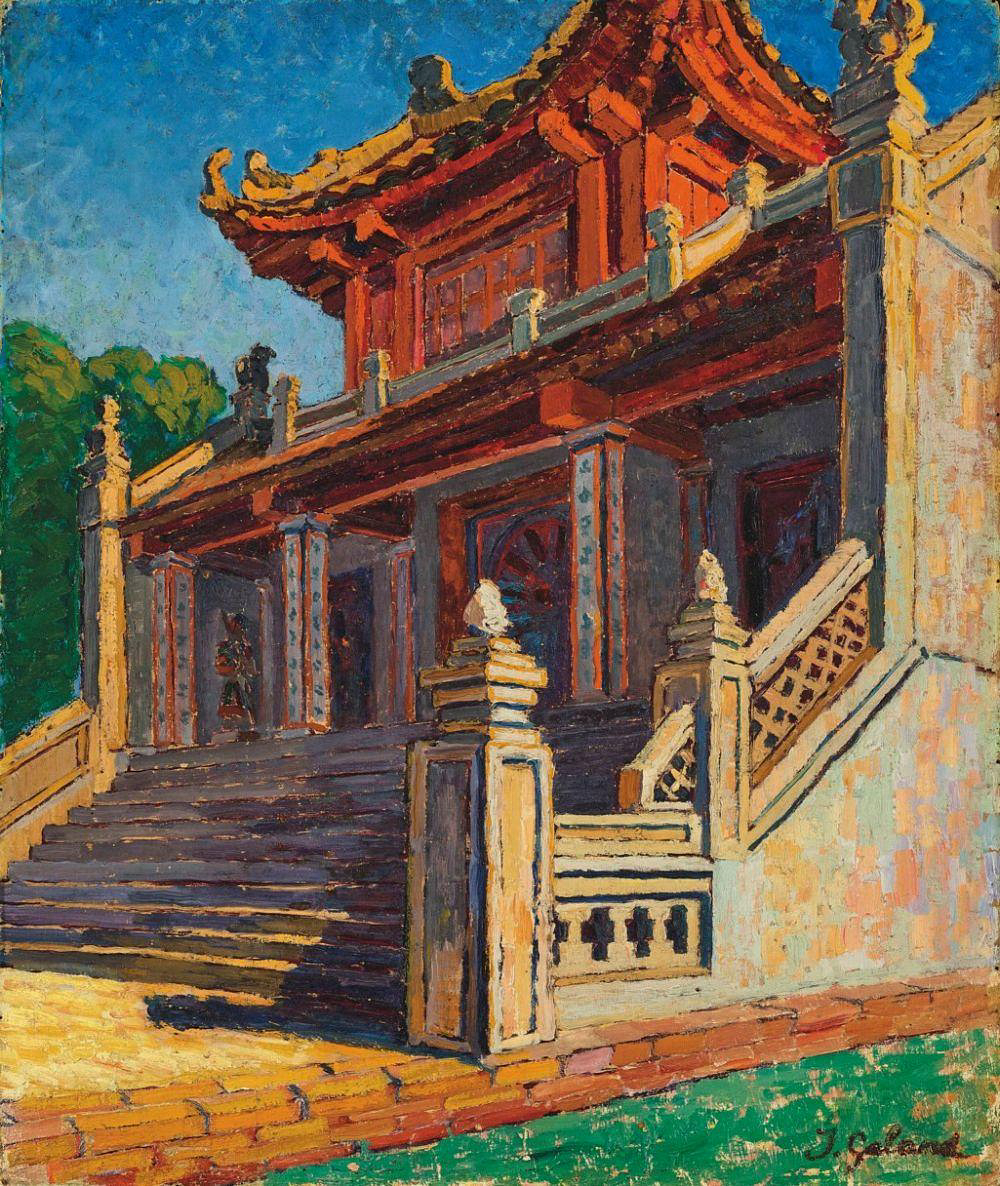
Jules Galand (France, 1870-1924)
Le Temple de Lang Can (Temple at Lang Can)
signed 'J. Galand' (lower right); titled and dated 'Lang Can Oct 09', label of a previous exhibition (on the reverse)
oil on board
54.5 x 46 cm. (21 1/2 x 18 1/8 in.)
Painted in 1909
Provenance
Collection of Jean-Marc Lefèvre, Paris, France
Christie's Hong Kong, 3 December 2020
Exhibited
Paris, France, Le Bon Marché Rive Gauche, L'âme du Vietnam, 1996
Literature
Jean-François Hubert (ed.), Editions Cercle d'Art, L'âme du Vietnam, Paris, France, 1996 (illustrated, p. 66)
Jules Galand, painter, pastellist and engraver, is best known for his Indochinese landscapes, although he also produced collections of engravings of Morocco and a few Breton landscapes. The artist was a second lieutenant in Indochina before leaving to discover Japan, where he was fascinated by the arts of lacquer and printmaking. On his return to France, he took up painting and engraving. Promoted to the rank of colonel at the end of the First World War, he was sent to Marrakech and Rabat before returning to Saigon in 1923. His two sojourns in Indochina were probably the high points of his career, given the place they occupied in his pictorial output. He took on the task of illustrating a novel by Jean Marquet, De la rizière à la Montagne, moeurs annamites (From the Rice Field to the Mountain, Annamite customs), which depicts the daily life of a poor peasant family in the north of present-day Vietnam. The work was awarded the Grand Prix de Littérature Coloniale, helping to raise the profile of the artist, who is recognized for his vibrant mastery of color, applied in vivid, fine brushstrokes, like the proponents of neo-Impressionism.










